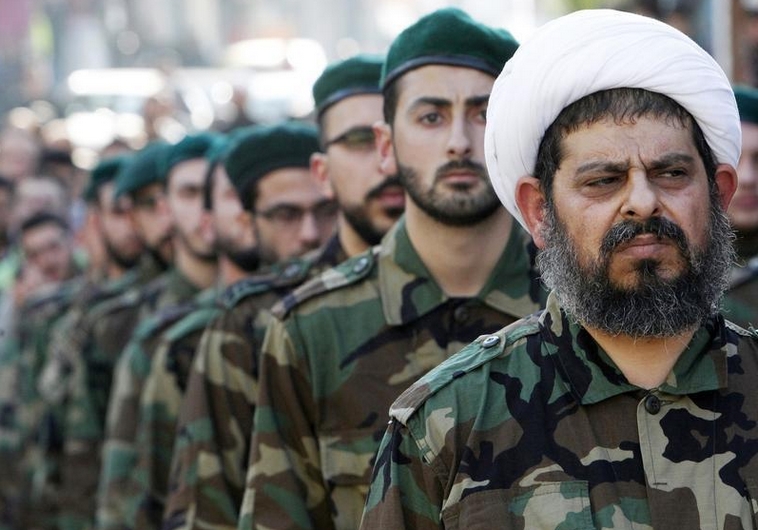Hezbollah in Syria: Plan B or a quagmire?
Joyce Karam/Al Arabiya
Thursday, 28 May 2015
“We will be everywhere in Syria” pledged Hezbollah’s Secretary-General Hassan Nasrallah to supporters who had gathered on Sunday to commemorate Lebanon’s 15th “anniversary of liberation” from Israel. But as the war takes a heavier toll on his party, Hezbollah is reaching its limitations in Syria and is risking getting dragged into a quagmire pending a change in calculus and direction.
This month, Hezbollah’s intervention in Syria has entered its fourth year while it is still focused on two objectives: the first to protect the Assad regime and maintain the “strategic depth” that it has provided the party since 1982; the second is military in nature – to preserve the supply routes for the party’s weapons shipments from Iran and to prevent the Syrian rebels from infiltrating the border. But these same goals have only been diminished in year four, as the Assad regime loses more territory, Hezbollah’s weapon supplies and fighters becoming increasingly more vulnerable to Israel and Syrian rebels taking the Lebanese border town of Arsal.
Steeper toll
The early stages of Hezbollah’s intervention were, by Western intelligence assessments, a game changer for the Assad regime. The party’s skilled and disciplined fighters secured the Qalamoun-Homs-Damascus corridor for Assad, preventing a military collapse of his forces and enabling regime control over the major cities. Politically, Hezbollah, by entering the Syrian war as a juggernaut Shiite militia, also fueled the sectarian strife in the conflict, diminishing the more moderate opposition and giving rise to the extremist Sunni groups such as Jabhat al-Nusra and later on, ISIS.
Changing the goals and scope of its mission in Syria is a strategic necessity for Hezbollah if it wants to spare itself from turning this into a quagmire
In marketing the intervention, Hezbollah’s early messages to its allies were a bet on an eventual victory for the regime by regaining full control over its territory and securing the party’s core strength in Lebanon. But as the war of attrition dragged on, and Hezbollah’s own goals of protecting its territory in Lebanon took a hit with car bombs in Bekaa and Dahiye in mid-2013 and early 2014, the party’s logic is being questioned by its supporters. Hezbollah’s rising death toll in Syria beyond the 1,280 fighters it lost in battling the Israeli occupation of South Lebanon, is raising questions within its own base on the value of fighting in Syria.
Murmurs of discontent within the Shiite community are also growing from mothers who refuse to send their sons to die in a conflict that has little to do with Hezbollah’s foundational cause of fighting Israel. The funerals of young Hezbollah men who died in Syria echo a sense of anxiety over the war that after three years there is no end in sight. Hezbollah is aware of this discontentment and is trying to overcome it by rallying the base, through labeling voices of dissent as “Shiite of the U.S. embassy,” and threatening mobilization.
Plan B?
As the Assad regime loses territory, and the rebels get a military boost regionally and on the ground, a continued Hezbollah push in Syria along the lines of saving the regime promises the party will become entrenched in a quagmire. It is unrealistic, mathematically and politically, for Hezbollah to win in a war of attrition against the local population, and that on behalf of a minority regime.
To prevent a quagmire, Hezbollah would have to move to Plan B in Syria by scaling down its mission and limiting its goals to defending its home front in Lebanon. Plan B, Faisal Itani of the Atlantic Council tells me, “would be to retreat to the minimum extent of defensible borders and lines of communication that would allow Hezbollah to meet its goals” of preserving the supply routes and “preventing the emergence of a hostile stable government in Syria.”
While Itani sees the current trajectory of Hezbollah’s actions in Syria as somewhere between Plan A and B, there are slim indications that the party might be changing the narrative and the game plan of its mission. In his last meeting with key Lebanese Christian ally Michel Aoun, Nasrallah reportedly emphasized that “it would be impossible to regain back all of Syria.” The goal is still to save the regime, Nasrallah said, although less involvement is seen by Hezbollah in areas such as Idlib and Jisr Shoughour and the now ISIS-held Palmyra. Even in the South, Hezbollah’s offensive has stalled and key border crossings have been relinquished by the regime.
Shifting focus to “the coastal region and the anti-Lebanon mountain chain” says Itani is what Plan B would look like, while ceding territory in the north and the south to the rebels. A senior U.S. official told Al-Hayat newspaper this week that “regional coordination has seen significant improvement on Syria and in terms of training and equipping the rebels.” Such coordination is expected to play out more vigorously in the next months to come especially in southern Syria.
Hezbollah, meanwhile, is focused on securing the border area of Qalamoun. For the third time since the Syrian war started, the party is trying to win its fight in the Qalamoun area which connects Damascus and Homs and gives the rebels border access to Lebanon.
Changing the goals and scope of its mission in Syria is a strategic necessity for Hezbollah if it wants to spare itself from turning this into a quagmire, and further weakening its defenses against Israel. Failing to do so will result in Syria becoming Hezbollah’s muddle, with unpredictable repercussions on the party’s future and the security of Lebanon..






















